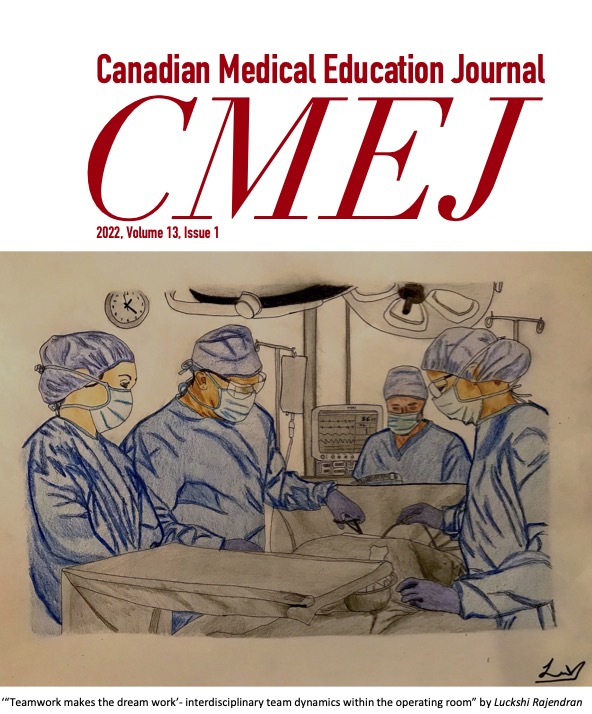Teaching in a pandemic: the transformation of teaching and clinical supervision
DOI:
https://doi.org/10.36834/cmej.72643Abstract
Introduction: The COVID-19 pandemic is an event that deeply impacts our personal, professional, and collective lives. How do we teach in these times of great upheaval? What are the main changes that have occurred?
Method: Using the Cartel logic, four professors and a qualitative researcher carried out an autoethnographic research aimed at documenting the main changes that have occurred in the teaching of family medicine in their respective practices located in four different academic family medicine groups at the University of Sherbrooke.
Results: Five key moments in teaching that occurred during a pandemic were identified: a) the declaration of a pandemic, b) the approach with the graduating/advanced cohort of residents, c) the anticipation and preparation for the arrival of new residents, d) arrival of first year residents and e) adaptation to the second wave. For each moment, we present the issues encountered in our care and teaching practices under three transversal relational axes: the relationship of humans to their cultural context, the patient-doctor relationship, and the teacher-resident relationship.
Conclusion: Our analysis shows that the transmission of medical knowledge and the art of medicine cannot take place without specific attention to the overall cultural context, the contextual relationship of clinical care, and the teaching relationship. Our study also makes it possible to recommend the opening of spaces for reflection and dialogue in our teaching environments.
Downloads
Downloads
Published
How to Cite
Issue
Section
License
Copyright (c) 2019 Tim Dubé, Marie-Christine Boucher, Louise Champagne, Marie-Ève Garand, Joanie Rinfret

This work is licensed under a Creative Commons Attribution-NonCommercial-NoDerivatives 4.0 International License.
Submission of an original manuscript to the Canadian Medical Education Journal will be taken to mean that it represents original work not previously published, that it is not being considered elsewhere for publication. If accepted for publication, it will be published online and it will not be published elsewhere in the same form, for commercial purposes, in any language, without the consent of the publisher.
Authors who publish in the Canadian Medical Education Journal agree to release their articles under the Creative Commons Attribution-Noncommercial-No Derivative Works 4.0 Canada Licence. This licence allows anyone to copy and distribute the article for non-commercial purposes provided that appropriate attribution is given. For details of the rights an author grants users of their work, please see the licence summary and the full licence.











